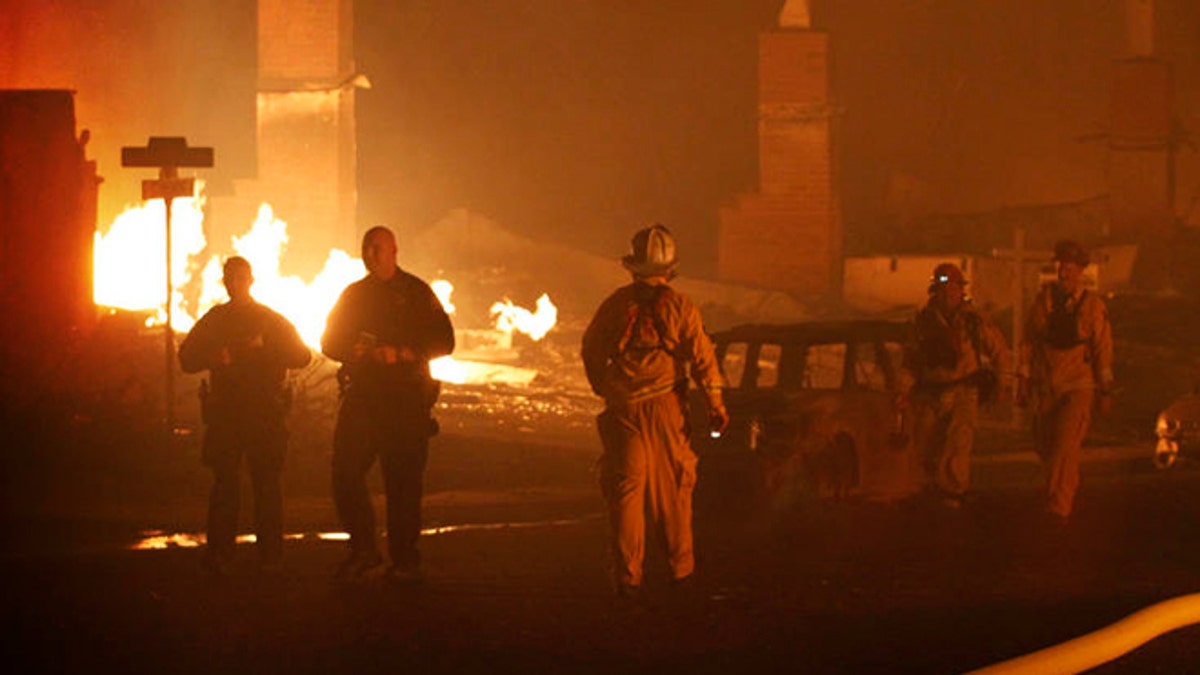
A new helmet for firefighters -- one inspired by the humble rat -- may provide an early warning system to alert of pending danger. (AP Photo/George Nikitin)
A new helmet is intended to make firefighters safer – - and this model was inspired by a rather unpopular creature.
Researchers at the Sheffield Center for Robotics at the University of Sheffield revealed a rodent whisker-inspired helmet in England at the Gadget Show Live, held last weekend at the NEC in Birmingham.
Rodents’ whiskers give them early warnings of potential hazards. Firefighters often need to work in smoke-filled unfamiliar environments and could use just such a warning system.
The new helmet is fitted with a number of ultrasound sensors to do just that. The sensors send signals to find walls and other obstacles to help guide a firefighter through challenging conditions.
They detect the distances between the helmet and nearby walls or other obstacles. These signals are then transmitted to vibration pads attached to the inside of the helmet.
It's important for firefighters to have their hands free, of course. Rather than leveraging fingertips tactile capability, the researchers built the vibrating pads into helmets. Using the firefighter’s forehead has the added benefit that the forehead enabled faster response to signals.
“When a firefighter is responding to an emergency situation he will be using his eyes and ears to make sense of his environment, trying to make out objects in a smoke filled room, for example, or straining to hear sounds from people who might need rescuing," explained Professor Tony Prescott of the University of Sheffield and director of the Center for Robotics. "We found that in these circumstances it was difficult to process additional information through these senses. Using the sense of touch, however, we were able to deliver additional information effectively.”
Prescott did not respond to FoxNews.com requests for a photo of his helmet.
Beyond an aid for first responders, they hope the tech also has potential for those with visual impairments. By equipping them with whisker sensing, it could help mitigate the risks of reduced vision and assist them in navigating while avoiding unseen dangers.
The prototype helmet was developed using a Rosenbauer helmet donated by Northfire Ltd. It was produced by a two-year research project funded by the U.K. Engineering and Physical Sciences Research Council.
The researchers worked closely with South Yorkshire Fire and Rescue Service who consulted with their expertise.
The team is looking for a commercial partner to further develop the helmet and make it available.
Ballet dancer turned defense specialist Allison Barrie has traveled around the world covering the military, terrorism, weapons advancements and life on the front line. You can reach her at wargames@foxnews.com or follow her on Twitter @Allison_Barrie.




















